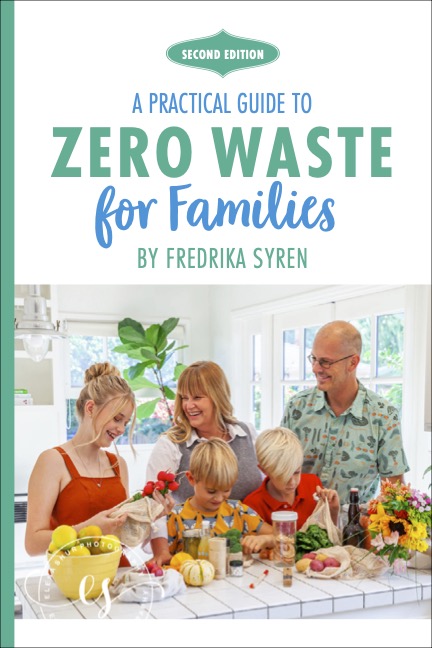Downshifting Tips
We live in a big, fast, grand world that glorifies success, but at what cost? The modern lifestyle we’ve all become accustomed to damages our health and the planet.
Our family used to be on the hamster wheel of working a lot, being super busy, and forgetting what was important—until we made the decision to downshift.

Downshifting is trading money and wealth for more time and a greater quality of life. It means living simply and needing less, so you can work less and enjoy the important things in life.
For our family, that meant living in a smaller home and reducing spending by cooking from scratch, not buying new things all the time, and eliminating shopping sprees.
Nowadays, we live better with less. This was not something we planned initially, but because we began reducing our carbon footprint and waste, the first step in that journey was to consume less and reuse more.
People choose to downshift for many reasons—to improve their personal lives, reduce their carbon footprint, save money, lower stress, etc., but downshifting also requires sacrifice. You have to be willing to reduce your income, spending, and standard of living and get creative with how you spend your spare time.
The first action we took was to look at our finances together, a rare occurrence for us. We analyzed our income and expenses and worked on lowering costs in order to live on our income.
The next step was examining our out-of-the-house expenses. We realized we had been renting a storage unit for years to store rarely used items we could not fit into our apartment. We emptied the unit and sold, donated, or threw away anything we didn’t need. A week later, we closed our storage unit and removed that monthly cost. We even made some money by selling items we had stored for years!

Next, we looked over what costs we could cut at home. Here’s what we did:
- Reduced our WIFI expense by getting a slower connection
- Stopped all subscriptions
- Stopped eating out and ordering take-out
- Grocery shopped once a week
- Baked bread
- Made weekly meal plans
- Reduced food waste by taking care and using food in the fridge and freezer
- Ate from our pantry
- Walked or cycled to get around
- Bought only used clothes (besides socks and underwear for kids)
- Stopped buying clothes for the two of us
People assumed that we were depriving ourselves and were missing our full income. Surprisingly, even though we lived on way less money, we lived richer lives because we spent more time together as a family. Once my husband felt 100% well, we decided we didn’t want to return to working full-time, so we continued to live minimally.
Our family is happier and healthier because of that decision. Today, we live comfortably on a part-time salary and even save money each month. Our goal is to pay off our house, have no loans at all, and to save and invest enough money that we have the option not to work if we wish.
With every financial move, we think about what kind of life we want to build. For us, financial decisions have to create the freedom we need to make us happy both today and in the future.
Ready to try downshifting? Here are some simple ways to cut costs:
Reduce the cost of food — Make lunches, eat at home, bring snacks, and picnic when out and about. Reduce food waste and take care of vegetables that are going soft.
Reduce living space — Maybe a smaller home is an option, or like us, decide to stay in a smaller home instead of buying something bigger but more expensive. Ensure your home is close to work, school, and activities to reduce travel.
Limit cars, or travel by public transportation or bike — We now have only one car instead of two, and we walk or bike as much as possible.
Take advantage of free activities — Parks, beaches, and playgrounds are usually free, and most kids love having a picnic outside.
Get extra income by renting out your home while you’re gone.
Enjoy downshifting! While it’s a sacrifice, the freedom it affords is priceless.
If you want to read more about how our family saves money check out this post and this post how we save $18,000 a year by buying less.
This is a great article about why people choose to downshift to a simpler life and this is another great one to learn more.









